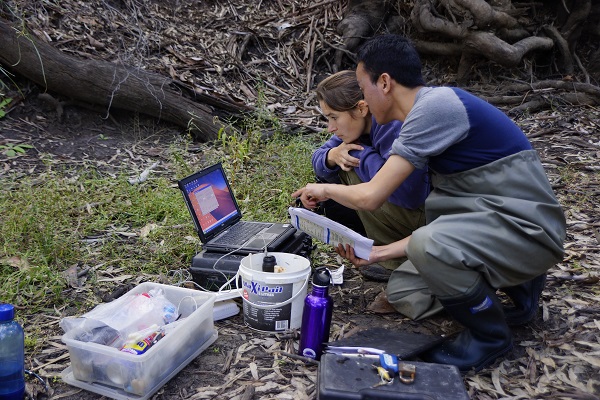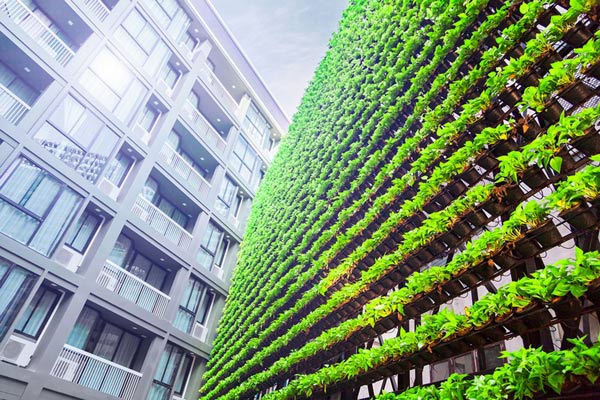
Studying Environmental Science and Management in Australia
It has never been as exciting a time to be studying and graduating with the skill-set provided by Environmental Science and Management. And it has never been as important as it is today. For global, regional and local environmental challenges have never been greater. These challenges are are manifold and reflect the wide-ranging and reflect the nature of Environmental Science and Management as a discipline.
Environmental Science and Management is characterised by being a problem solving discipline with a future focus. It enables Systemic understanding and transdisciplinarity. Further Environmental Science and Management provides skills for environment and sustainability and ethical practice. It is the ideal discipline to be engaged in during times of rapid change. Change is increasing in speed and intensity.
Studying Environmental Science and Management in Australia provides particular rewards because Australia is a world leader in teaching and research in Environmental Science and Management. And this leadership is particularly wide-ranging across our academic institutions. Further, diversity of opportunities in undergraduate and postgraduate programs is remarkable at a world-scale.
For example, there are strong metrics demonstrating strength in research in Environmental Science and Management in Australia. The ‘Australian Research Council (ARC)’ runs a program of quality assessment called the ‘Excellence in Research Australia (ERA)’. This program assesses the quality of research in a broad range of disciplines across the universities of Australia. There is a discipline classified as ‘Environmental Science and Management’ (code 0502).

The ERA is widely regarded as robust and a good reflection of the quality of research in different disciplines. It also informs where we have larger or smaller collective capacities, assessed against global standards. Such research quality and critical mass is crucial to Australia’s social and economic prospects. Research quality also makes a difference in teaching and leadership – among many issues that prospective students consider when choosing where and what to study.
To make an ERA submission in a particular discipline, a university needs to have at least 50 research outputs over the five years of the assessment period. So, the number of Australian universities that can construct an ERA submission provides an excellent measure of national research capacity in that field. The critical point of the ERA is alignment of a 1-5 ranking of quality. Here a 3 is ‘world standard’, a 1 is ‘well below world standard’ and 5 is ‘well above world standard’.
The 2018 submissions have recently been published showing how Australian universities perform on the world stage. In ERA code 0502 (Environmental Science and Management), an impressive 32 of 41 universities had sufficient research outputs to make a submission. This shows Australian’s do a lot of research in Environmental Science and Management which is very good news for prospective students.
There is even better news for prospective students thinking of gaining a qualification in Environmental Science and Management in Australia. All of the 32 universities were ranked at or above world standard with 28 universities assessed as 5 or ‘well above world standard’ and a further 3 ranked at 4 (i.e. ‘above world standard’). This is a remarkable outcome relative to almost all other research disciplines across Australian universities. It shows that Australian’s are very good at research in Environmental Science and Management. There is a wide range of options of universities to choose from to gain a qualification in Environmental Science and Management.
So why is Australia so strong in the area of Environmental Science and Management? Australia has a natural and national competitive example in environmental research. Our landscapes and biota are unique and fascinating to the world. But these landscapes and their biota also face very familiar challenges. Lessons learnt in Australia can be applied much more widely.
Australia has a rich history of policy and management experiments in natural resource and environmental management. This history is not just for the 200 odd-years since we have become known to the world as ‘Australia’. Actually, this history extends for the 60 000 plus years that people have been managing this landscape and its biota. There is much to learn from many pillars of wisdom in Environmental Science and Management.
Australia more often combines physical, natural and social sciences, as well as researchers and practitioners in our research than do many other countries. We have the data, the people, the capacity and the perfect laboratory in our landscapes to do Environmental Science and Management very well. This is of interest to students, scientists, policy makers and the general public in the rest of the world.
So what does this this excellence in Environmental Science and Management mean for prospective students considering a qualification gained in Australia? It is clear that Australia takes research in Environmental Science and Management very seriously indeed. It provides a measure of Australia’s capacity to confront challenges and embrace opportunities. It also enables excellence in teaching. There are several reasons for this.

Australian academics are very engaged in research, and in teaching and learning. More importantly we are engaged in the intersection of research and teaching. Research directly informs our teaching at a range of levels. We are intimately involved with the great natural laboratories in Australia ranging from the Great Barrier Reef, alpine areas, tall forests, and the deserts and semi-arid landscapes. All these environments and many others provide sites where Australian academics lead student excursions as an in-built component of their curriculum.
Australian academics also know what employers want in graduates in Environmental Science and Management. That is because many are very engaged with industries ranging from agriculture, mining and restoration to biodiversity conservation and sustainable infrastructure. Teaching and Learning in Environmental Science and Management is very applicable to the needs of society, students and employers.
Recent studies show that three areas stand out overall as sought-after or required skills in Environmental Science and Management. These include project management and problem solving skills, spatial skills, and written and oral communications skills. Australian institutions and their staff continually scrutinise the various programs offered in Australia are looking at changing expectations by industry, students and world events and trends. They are continuously updating to remain world leaders.
If you are considering a qualification in Environmental Science and Management, you would be hard-pressed to do better than coming to an Australian university.
Ass/Prof. Dianne Gleeson, President, Australian Council of Environment Deans and Directors

